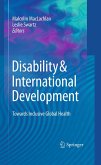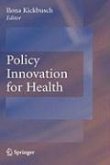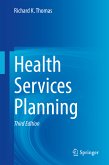Cheryl Vince Whitman and Carmen Aldinger
A growing body of research identifies strong links between children's health, social and educational outcomes; it also notes the reciprocal benefits of access to quality education on individual and family health status. In response to these findings, the World Health Organization developed the concept of the Health-Promoting School (HPS), a living catalyst for healthy lives, and for positive changes that students can take home and into the community. Case Studies in Global School Health Promotion provides readers with a theoretical and research base needed to understand the methods used in communities all over the world to put this captivating concept in place.
Case examples from over two dozen countries (representing urban and rural areas in developing and developed nations) outline the strategies taken to implement HPS programs in individual schools, municipalities, and nations. For each program, case study authors explain the problems they tackled, their motivation and supports to respond creatively; and the barriers they faced. In the cases, authors describe the capacities and infrastructure they created and mechanisms for cooperation; as well as the personnel, financial, and time requirements involved. Case studies were drawn from the following regions:
- Africa
- The Americas
- Europe
- Eastern Mediterranean
- South and Southeast Asia
- Western Pacific
Case Studies in Global School Health Promotion offers a world of insights, ideas, and guidance to those addressing social determinants of health at this formative stage, including: education and health policy makers; professionals and administrators; and researchers in nationalgovernments, universities, local schools, community, non-governmental organizations and civil society. The material provides interesting and useful information to those dedicated to these issues within WHO, FRESH (Focus Resources on Effective School Health) Partners and other United Nations agencies. It is also an instructive text for graduate students in public health, education, allied health professions and social sciences.
Dieser Download kann aus rechtlichen Gründen nur mit Rechnungsadresse in A, B, BG, CY, CZ, D, DK, EW, E, FIN, F, GR, HR, H, IRL, I, LT, L, LR, M, NL, PL, P, R, S, SLO, SK ausgeliefert werden.
"Using a case-based approach, this book describes the application of the health-promoting school (HPS) model to improve child health outcomes globally. ... The audience is primarily graduate students in public health, education, allied health professions, and social sciences. A secondary audience is educators, policy makers, professionals and administrators in national governments, universities, nongovernmental agencies, schools, and civil society. The use of the case-based application is effective in covering the conceptual framework of HPS." (Carole A. Kenner, Doody's Review Service, July, 2009)









